We must emphasize the importance of efficiently managing and utilizing digital assets in today’s digitally-driven world. Every aspect of your company’s online presence, from marketing campaigns to brand representation, is essential for drawing in viewers and encouraging participation. A digital asset manager’s (DAM’s) function becomes crucial at this point. A DAM professional is the mastermind behind the scenes, overseeing digital media assets’ organization, storage, and distribution.
Suppose you are looking for digital asset manager jobs or want to improve your digital asset management workflow. This guide gives you valuable insights into DAM roles, top job prospects, and insider strategies to succeed in this dynamic and evolving field.
Skip To
The Evolution of Digital Asset Manager Jobs
The digital asset management industry isn’t just growing; it’s constantly evolving. Today, DAM is about far more than just file storage; it’s a multi-disciplinary role that demands an understanding of technology, design, and corporate strategy.
The Role of DAM in Modern Business
From local startups to multinational corporations, DAM professionals are now indispensable. They are gatekeepers to a brand’s visual identity and are pivotal in ensuring consistent and efficient content delivery.
Critical Competencies for Digital Asset Manager Jobs
The ideal DAM candidate possesses a unique blend of technical understanding, creative sensibility, and project management expertise. They are adept at:
- System Implementations and Integrations: This involves setting up new software systems and ensuring they work together seamlessly, for example, integrating a customer relationship management (CRM) system with an email marketing platform.
- Metadata Standards and Tagging: Establishing guidelines for organizing and labeling data to make it easier to search and retrieve, for instance, using metadata tags to categorize photos in a digital asset management system.
- User Training and Support: Providing education and assistance to users on effectively utilizing a system or software, for instance, conducting workshops to train employees on a new project management tool.
- Digital Rights Management: Managing and protecting copyrights and intellectual property in the digital realm, for example, using DRM technology to prevent unauthorized digital content distribution.
- Analytics and Reporting: Gathering and examining data to make sense of it and guide choices. For example, generating monthly reports on website traffic and user engagement metrics.
- Governance and Compliance: Establishing policies and ensuring adherence to regulations within an organization, for example, implementing data privacy policies to comply with GDPR requirements.
An in-depth understanding of these areas is essential for navigating the complexities of digital asset management effectively.
Unveiling Top Digital Asset Manager Jobs Titles to Pursue
Digital Asset Manager jobs come in various flavors, each with responsibilities and skill requirements. Some of the popular DAM job titles include:
Digital Asset Coordinator
This entry-level position frequently includes administrative tasks such as organizing files, managing daily system operations, and assisting users of Digital Asset Management (DAM).
Digital Asset Librarian
Here, the primary objective is to meticulously catalog, archive, and ensure the overall integrity and accessibility of a diverse digital asset collection. By meticulously organizing and safeguarding these digital assets, we aim to create a robust system that enables efficient retrieval and utilization of the stored information for various purposes.
DAM Analyst
This role optimizes Digital Asset Management (DAM) system performance by monitoring systems requirements, overseeing software updates, and managing seamless integrations with other software applications.
DAM Strategist
With a keen focus on the business aspects, the task of creating and implementing thorough Digital Asset Management (DAM) falls to strategists., incorporating industry best practices, and establishing robust governance structures to ensure the effective management of digital assets throughout the organization.
Brand Manager with DAM Expertise
A relatively new crossover role combines traditional brand management skills with a deep understanding of Digital Asset Management (DAM) processes and technology. This hybrid position requires professionals to navigate the intersection of brand strategy, creative asset organization, and technological advancements in the digital landscape.
By understanding the nuances of each role, job seekers can better align their skill sets with their desired outcomes.
Digital Asset Management Workflow
The digital asset management workflow ensures the proper organization, storage, and distribution of digital assets. It is essential to establish a well-defined workflow to manage these valuable resources efficiently.
Step 1: Asset Creation
The first step in the digital asset management workflow is the creation of digital assets. It can include images, videos, audio files, documents, etc. It is essential to keep track of the date and creator of each asset for future reference.
Step 2: Asset Organization
Organize assets logically and consistently after creating them. Assigning metadata such as keywords, descriptions, and categories to each asset is part of the process. Searching for and locating specific assets in the future becomes more effortless.
Step 3: Asset Storage
Store the created and organized assets in a secure and easily accessible location. Cloud-based storage solutions are often used for digital asset management workflows as they provide scalability, flexibility, and remote access.
Step 4: Asset Distribution
The next step in the workflow is the distribution of digital assets. Sharing assets with internal teams or external parties, such as clients or partners, is an active part of the process. Appropriate authorization and access controls must be in place to guarantee the security of assets.
Step 5: Asset Tracking and Analytics
To effectively manage digital assets, tracking their usage and performance is crucial. You can achieve this by utilizing analytics tools that monitor views, downloads, and other metrics. This information can help inform future asset creation and distribution decisions.
Step 6: Asset Maintenance
Digital assets require regular maintenance to ensure they are up-to-date and continue to meet their intended purpose. You may need to update metadata, edit, replace, or archive older assets. Regular maintenance helps keep the digital asset management system organized and efficient.
Tips for Successful Digital Asset Management Workflow
- Involve all stakeholders in the workflow creation process to ensure it meets everyone’s needs.
- Regularly review and update the workflow to adapt to changing needs or technologies.
- Use consistent file naming conventions and folder structures to make organization easier.
- Implement version control to track changes and updates to assets.
- Train users on proper asset management practices and protocols.
- Consider implementing a digital asset management system or software to streamline the workflow.
Overall, a well-designed digital asset management workflow can save time, improve collaboration, and increase the value of an organization’s digital assets. You can establish an efficient and effective digital asset management process by following these steps and incorporating additional tips.
Essential Tools and Technologies for DAM Professionals
To excel in digital asset management, proficiency in specific tools and technologies is necessary. Some of the critical platforms include:
Adobe Experience Manager
This DAM platform is a popular choice for enterprises, providing robust asset creation, management, and delivery features within a unified environment.
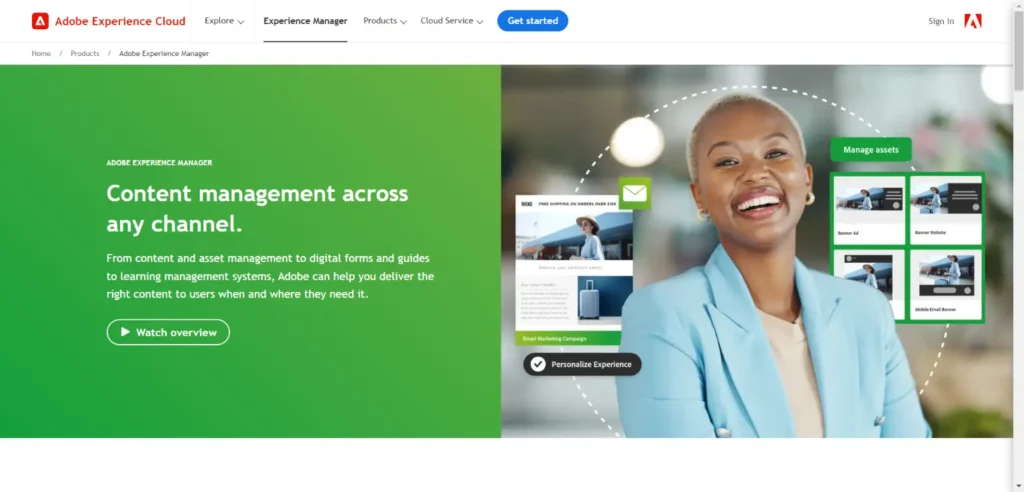
Reference: Adobe Experience Manager Assets
Pros:
- Provides an integrated cloud-based solution for managing content and assets efficiently.
- Offers AI-powered tools for intelligent tagging and automation, substantially reducing the manual work required in asset management.
- Seamlessly integrates with other Adobe products, offering a comprehensive suite for digital experience management.
Cons:
- The price point may be prohibitive for small businesses or individual creators.
- The vast array of features can overwhelm new users, necessitating a steep learning curve.
Widen Collective
Another cloud-based DAM solution, Widen, is known for its user-friendly interface and a robust suite of features, including robust search capabilities and AI integration.
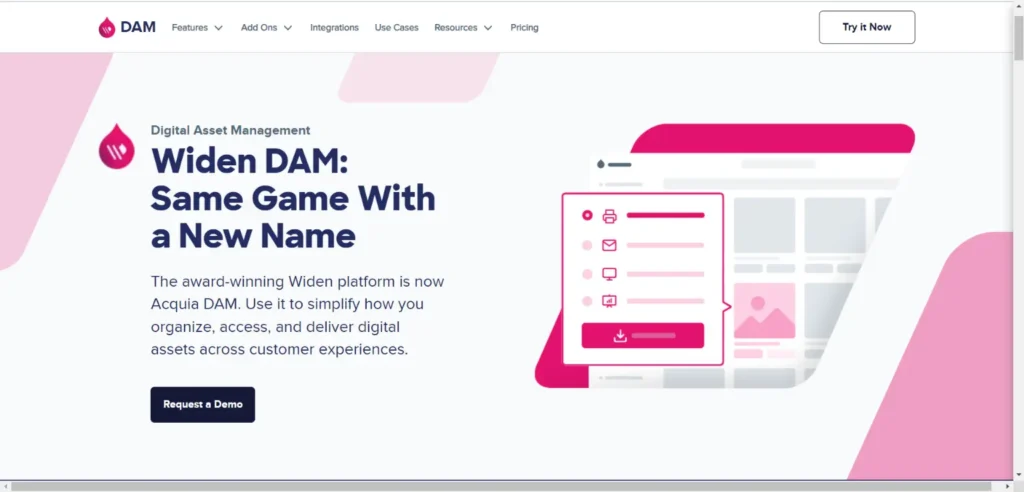
Reference: Widen Collective
Pros:
- Offers robust workflow capabilities for asset creation, review, and approval processes, enhancing team collaboration.
- The platform is highly customizable, allowing it to be easily customized to fit the specific needs of any organization.
- Widen provides excellent customer support and a strong community for users.
Cons:
- Some users may find the interface less intuitive compared to other DAM systems.
- The setup and implementation process can be time-consuming.
Bynder
A cloud-based solution, Bynder, supports the entire digital content lifecycle, allowing for seamless collaboration and streamlined asset distribution.
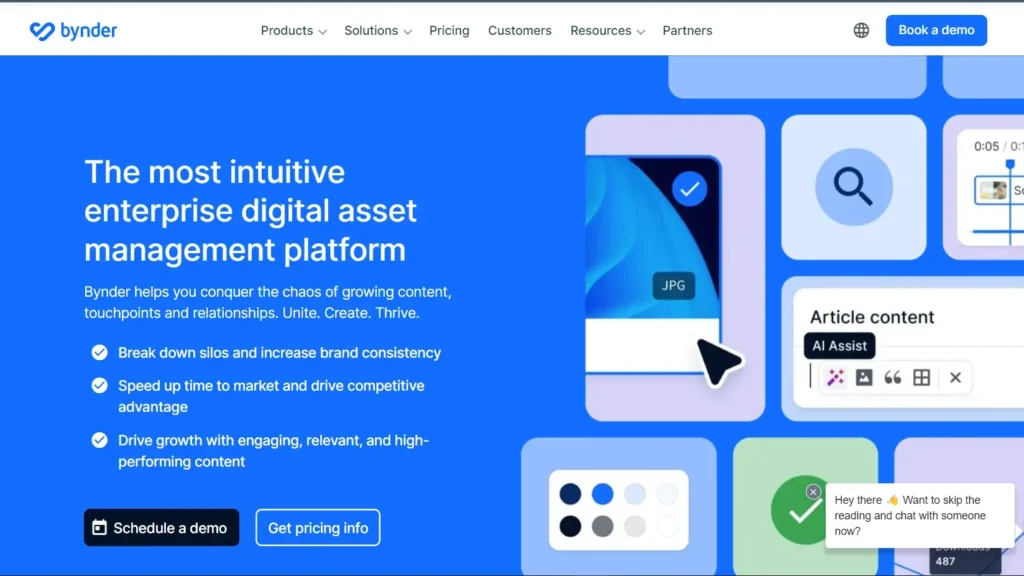
Reference: Bynder
Pros:
- Bynder emphasizes brand consistency across all digital assets, making it ideal for marketing teams.
- It provides an intuitive and user-friendly interface, reducing new users’ learning curve.
- Provides powerful analytics to track asset usage and performance.
Cons:
- Advanced features and customization options can get expensive.
- Some users have reported limitations in the search functionality, making it challenging to locate specific assets quickly.
Box
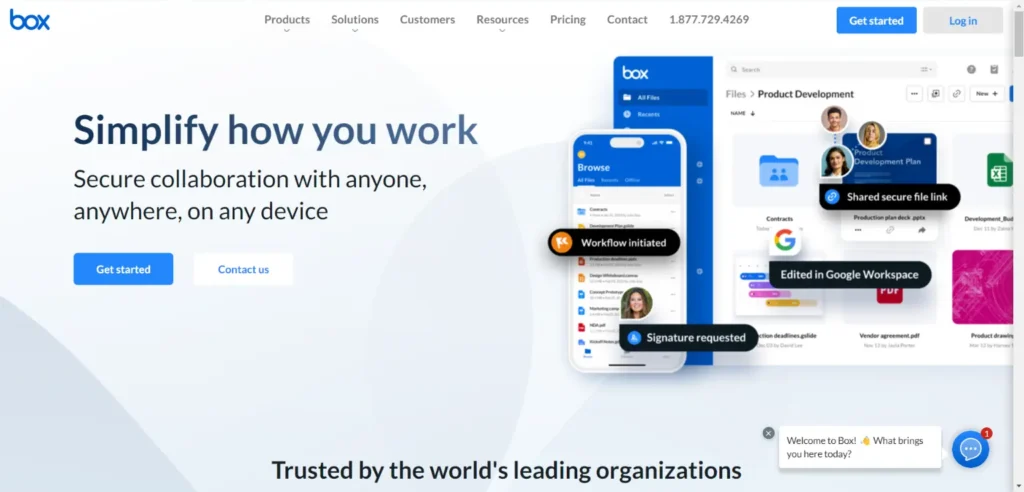
Reference: Box
Pros:
- Box provides robust security features, including advanced encryption, which safeguards digital assets from unauthorized access.
- Integrates well with numerous third-party applications, facilitating a flexible and efficient workflow.
- Provides file sharing and collaboration tools, making it easy for teams to work together on digital assets.
Cons:
- Box offers a robust file storage and sharing tool, but its DAM capabilities need improvement compared to dedicated DAM solutions.
- Some standard features in other DAM platforms may require additional configuration or integration in Box.
The right Digital Asset Management tool is crucial for efficient and effective digital asset management. Each of the tools listed above has unique strengths and potential drawbacks, and the best choice will depend on your organization’s specific needs, budget, and existing workflows.
By becoming skilled in these and similar platforms, DAM professionals can ensure their skill set remains competitive and relevant.
How to Stand Out in the DAM Job Market
Competition for DAM roles is fierce, but several strategies can help candidates distinguish themselves:
Demonstrate Your Knowledge
Stay abreast of industry trends and best practices. Engage with the digital asset management community through forums, webinars, and networking events.
Highlight Relevant Experience
Even if you’ve never held a specific DAM title, citing projects or responsibilities that align with DAM functions can showcase your readiness for the role.
Leverage Advanced Education
Seek courses and certifications in DAM-specific areas, such as metadata management or digital content strategy, to bolster your resume.
Build a Portfolio
A portfolio of successful DAM projects you’ve managed or contributed to can be a game-changer in the hiring process.
Landing Your Dream DAM Job
Once you’ve zeroed in on your target positions, aced your application documents, and made it to the interview stage, how can you ensure success?
Prepare for the Technical Aspect
You may need to demonstrate a DAM system or provide instructions on handling a specific scenario. A strong understanding of the technologies used in the job can make you stand out.
Be Ready for Behavioral Questions
Employers want assurance that you’ll fit into the company culture and be an influential team member. Be ready to discuss how you’ve handled challenges or contributed to the success of a project in the past.
Showcase Your Soft Skills
Collaboration, communication, and adaptability are vital in the modern workplace. Share examples of how you’ve used these skills to achieve a positive outcome.
By following these insights and working hard, you can position yourself as a top candidate for digital asset management roles that align with your career aspirations.
Conclusion
In today’s digital business landscape, the role of a Digital Asset Manager is pivotal and ever-evolving. Digital asset manager jobs are multifaceted and dynamic, requiring individuals to continuously learn, adapt, and innovate to thrive in this field. Whether you’re a job seeker entering the realm of digital asset management or an experienced incumbent aiming for career growth, mastering the digital asset management workflow is essential. Understanding market trends, refining relevant skills, and strategically showcasing your expertise are crucial steps in securing the right opportunities and advancing in this burgeoning field.

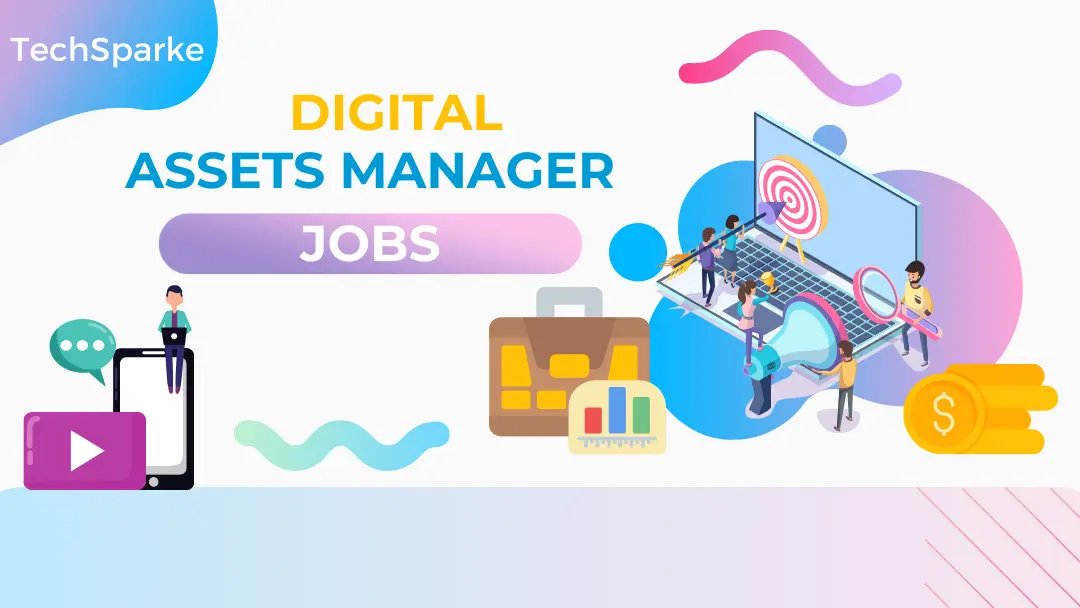
0 Comments